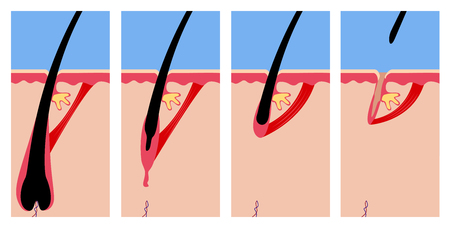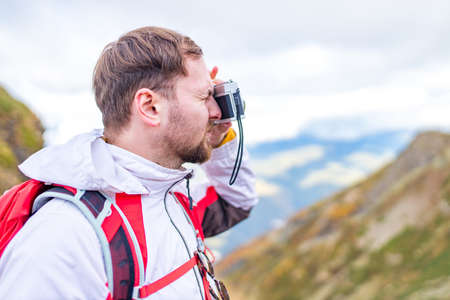Understanding Sprains and Strains on the UK Trails
If you’ve ever tackled the windswept Pennine Way or scrambled over the rugged fells of the Lake District, you’ll know that British walking routes can be as unpredictable as the weather. Sprains and strains are two of the most common injuries faced by walkers here, often striking when confidence is high and vigilance is low. But what exactly are these injuries? A sprain occurs when ligaments—the tough bands connecting bones at a joint—are stretched or torn, usually following an awkward twist or stumble. Strains, on the other hand, affect muscles or tendons and arise from overstretching or overuse, particularly on steep ascents or descents typical of classic British terrain. The craggy footpaths, slippery stone slabs, and undulating moorlands that define our national trails not only promise adventure but also increase your risk of taking a misstep. Combine unpredictable surfaces with sudden changes in elevation and unpredictable weather, and it’s clear why sprains and strains are part and parcel of the UK hiking experience. Knowing how these injuries occur—and recognising their relevance to our much-loved routes—is your first step towards tackling them head-on.
2. Spotting the Signs: Recognising Injuries on the Path
When you’re trekking through the unpredictable British countryside—be it the misty peaks of the Lake District or the rugged trails of Snowdonia—knowing how to spot a sprain or strain is crucial. The UK’s ever-changing weather and tricky terrain, from boggy moors to slippery stiles, can turn a simple misstep into a real problem. Spotting these injuries early means you can act fast and keep your adventure from turning sour.
Common Symptoms to Look Out For
Sprains and strains often present similarly at first glance, but there are key differences. Here’s how to tell if you or your walking mates might be in trouble:
| Symptom | Sprain (Ligament Injury) | Strain (Muscle/Tendon Injury) |
|---|---|---|
| Pain Location | Around joints (ankle, knee, wrist) | In muscles (calf, thigh, back) |
| Swelling | Common and often rapid onset | Mild to moderate, develops gradually |
| Bruising | Likely to appear after a few hours | Less common, but possible with severe strains |
| Movement Difficulty | Joint feels unstable or hard to move | Pain when using or stretching the muscle |
| Other Signs (UK Specifics) | Might worsen in cold, damp conditions—watch out for increased stiffness on chilly mornings or after rainfall | Cramps more likely after long walks in unpredictable British weather, especially if you’ve slogged through mud or over rocky scrambles |
The British Weather Factor
The UK is notorious for its rain and sudden temperature drops. Cold and wet conditions can mask initial pain, so always check yourself and your group for hidden injuries after slips or tumbles—even if everyone laughs it off at first. Muddy boots and sodden socks can also hide swelling around ankles and feet, so make regular pit stops to inspect any aches or pains.
The Importance of Peer Checks on the Trail
A classic bit of British hillwalking wisdom: “Never walk alone—and always mind your mate.” Whether you’re leading a group along Hadrian’s Wall or rambling through the South Downs, keep an eye on each other. If someone starts limping, favouring one leg, or complaining of aching muscles after a misstep, don’t just chalk it up to fatigue. Early recognition is your best chance at preventing further injury.

3. Immediate First Aid in the Wilds
If you find yourself deep in the Lake District fells or trudging the wilds of Dartmoor and suddenly a sprain or strain strikes, quick thinking and resourcefulness are your best mates. The unpredictable British weather and remote terrain mean help might be hours away—so knowing what to do is essential for every rambler.
Assessing the Situation Calmly
First things first: don’t panic. Sit down safely off the path and take a few deep breaths. Evaluate the injury—can you move the joint at all? Is there swelling, bruising, or intense pain? If it’s a severe sprain or strain, walking further could make matters much worse.
Essentials from Your Rucksack
Your rucksack is more than just a biscuit carrier—it’s your lifeline. Grab your first aid kit: use an elastic bandage to support the injured area, wrapping firmly but not too tightly (you don’t want to cut off circulation). Pop on a cold pack if you’ve got one, or improvise with a bottle of stream water wrapped in a scarf to reduce swelling.
Improvisation Using Nature’s Toolkit
If you’re caught short without kit, look around. A sturdy stick can become an impromptu walking aid, taking weight off your dodgy ankle or knee. In hedgerow country, tear strips from an old t-shirt or even spare socks to tie and support the injured limb. Tuck yourself into a sheltered spot—stone walls or dense gorse can shield you from biting winds while you regroup.
Staying Put vs Pressing On
The golden rule: if you suspect a serious injury, stay put. Don’t risk making it worse by soldiering on through bog or bracken. Use your mobile (signal permitting) to ring 999 and ask for Mountain Rescue—these local legends know the lay of the land and can reach you faster if you give clear details about landmarks and grid references.
Remember: even the most seasoned UK walker can take a tumble. Being prepared—and knowing how to adapt when kit runs low—can turn a potential disaster into just another epic tale from Britain’s wildest routes.
4. When to Push On or Call for Help
When you’re deep in the Lake District, halfway up Snowdon, or tackling the windswept cliffs of the South West Coast Path, deciding whether to crack on or call for help after a sprain or strain is an adventure in itself. Here’s how to make that call with British grit and good sense.
Assessing the Severity: The Quick Checks
First up, give your injury a proper once-over. Are you dealing with a mild twist, or something more sinister? Here’s a handy table to help size things up:
| Symptom | Mild (Carry On) | Moderate (Seek Local Help) | Severe (Call Emergency) |
|---|---|---|---|
| Pain Level | Dull ache, manageable | Sharp, persistent pain | Intense, unbearable pain |
| Swelling/Bruising | Minimal, settles quickly | Significant swelling, spreading bruises | Rapid swelling, deformity |
| Mobility | Can walk with little discomfort | Difficult to move without limping | Impossible to bear weight/move limb |
| Sensation | No numbness/tingling | Mild tingling/numbness | Total loss of sensation/control |
Soldier On: When It’s Safe to Continue Walking
If your pain is low and movement isn’t much affected, you’re probably fine to take it steady and press on—classic British spirit! Use a walking pole for support and keep an eye on any changes. Pace yourself and don’t be shy about turning back if things worsen; pride comes before a fall (literally).
Seeking Local Help: Villages, Pubs & Park Rangers
If the discomfort is rising but you’re not in dire straits, head for the nearest village or pub—there’s always friendly advice (and possibly some first aid) at hand. National Parks often have rangers who can lend assistance or guide you to the nearest minor injuries unit. Don’t hesitate to ask; Brits are famously helpful on the hills.
Emergency Situations: Time for Mountain Rescue or 999?
If your injury is severe—intense pain, obvious deformity, inability to move, or symptoms like shock—it’s time to dial 999 and request Mountain Rescue. Don’t downplay it; weather can change rapidly on UK hillsides and even a simple sprain can become dangerous if you’re stranded. Keep calm, provide your exact location (using grid references or What3Words), and conserve energy while waiting for help.
The Adventure Ethos: Know Your Limits, Respect the Terrain
The thrill of UK walking routes lies in their unpredictability—but so does their risk. Assess honestly, act decisively and remember: true adventurers know when it’s braver to call for backup than push recklessly onward.
5. Prevention Tips for Ramblers and Hikers
Get Your Body Trail-Ready the British Way
Before you even lace up your walking boots, building strength and flexibility is key to avoiding sprains and strains on the UK’s undulating footpaths. Classic British wisdom recommends regular brisk walks in local parks, integrating gentle hill climbs common in places like the Lake District or South Downs. Add a spot of yoga or Pilates – increasingly popular in village halls from Cornwall to Cumbria – to boost balance and core stability, both crucial for tricky stiles and uneven ground.
Choose the Right Route for Your Skill Level
British walking routes range from gentle towpaths along canal sides to the rugged scrambles of Snowdonia and the Highlands. Consult trusty OS maps (a staple in every rambler’s kit), check route difficulty ratings, and don’t bite off more than you can chew. If you’re new to hiking, start with well-trodden National Trust trails or circular walks around local commons before attempting something like the Pennine Way or Scottish Munros.
Kit Up Like a Local
The unpredictable British weather means your gear matters. Supportive, waterproof boots with good ankle support are non-negotiable. Layer up with moisture-wicking base layers and a proper waterproof (not just “showerproof”) jacket. Carry a lightweight walking pole – they’re not just for older ramblers; poles help steady knees and ankles on steep descents and slippery paths.
Classic British Joint Care
Many seasoned walkers swear by age-old remedies: cod liver oil capsules for joint health, hearty breakfasts rich in oats for sustained energy, and regular tea breaks to rest tired legs. Don’t overlook the importance of stretching before you set off and after you finish – a few minutes beside a dry-stone wall or village green can make all the difference.
Stay Alert, Stay Safe
Finally, always let someone know your route before heading out, especially in remote areas where mobile signal is patchy. Stick to marked paths, heed local advice about boggy ground or recent landslides, and respect your own limits – no summit is worth a twisted ankle far from help. By preparing your body and kit in true British style, you’ll be ready for adventure while minimising risk on every ramble.
UK Resources and Support for Walkers
In true British fashion, the outdoors community across the UK has built a robust network of support for walkers who find themselves nursing sprains or strains along their favourite routes. Whether you’re trekking the windswept moors of Dartmoor or navigating the rugged fells of the Lake District, help is never too far away. Here’s how the UK’s walking culture rallies together when injury strikes—and where you can find support once you’re back on your feet.
The Role of National Park Rangers
National Park rangers are the unsung heroes of Britain’s wild spaces. These seasoned experts are not only custodians of the landscape but also first responders in emergencies. Many rangers receive first aid training and are well-versed in dealing with common walking injuries. If you’re injured within park boundaries, flagging down a ranger or heading to a visitor centre is often your fastest route to immediate assistance. Their local knowledge is second to none, meaning they can direct rescue services with pinpoint accuracy should a more serious evacuation be required.
Walking Clubs: Community in Action
Britain’s walking clubs—ranging from The Ramblers to smaller local groups—are more than just social circles; they’re lifelines for solo and group hikers alike. Most clubs operate under strict safety protocols and encourage members to look after one another. If you join a club walk, you’ll find that group leaders usually carry first aid kits and have procedures in place for dealing with injuries, including those stubborn ankle sprains or muscle pulls that can bring an epic day out to a grinding halt. Don’t hesitate to reach out to these groups for advice or camaraderie during recovery—they’re always keen to help fellow adventurers get back on track.
Mountain Rescue and Emergency Services
No discussion of UK walker safety would be complete without mentioning Mountain Rescue teams—volunteer-led organisations that provide lifesaving assistance across upland Britain. Whether you’ve twisted an ankle on Ben Nevis or pulled a muscle on Snowdonia’s rocky ridges, these highly trained teams can be summoned via 999 in genuine emergencies. They work closely with ambulance services and are equipped to handle everything from minor injuries to full-scale rescues in some of the country’s most challenging terrain.
Support After Injury: Where To Turn
Once you’re safely home and licking your wounds, several organisations offer post-injury support. The NHS provides comprehensive guidance on rehabilitation exercises for sprains and strains, while charities such as Mind Over Mountains offer mental health support for those struggling with setbacks after an outdoor injury. Local physiotherapists familiar with hiking injuries are easy to find through GP referrals, ensuring your recovery stays on track.
Staying Connected With the Outdoors
The UK’s walking community thrives on mutual support and shared passion for adventure. Whether it’s swapping tales of mishaps at a village pub, joining an online forum like Walking Forum UK, or attending a local rambling group’s monthly meet-up, there’s no shortage of encouragement and practical wisdom available. So if injury sidelines you temporarily, take heart—Britain’s walking world will help you heal, re-gear, and hit the trail again stronger than ever.


